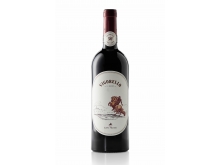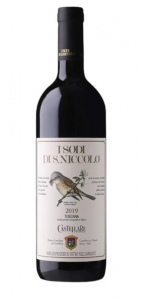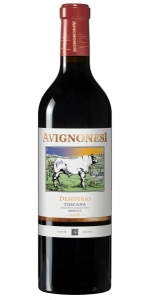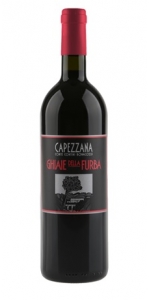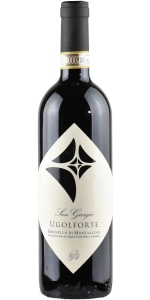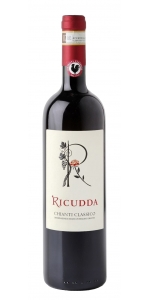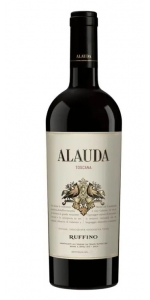San Felice Vigorello Toscana IGT 2018
| Country: | Italy |
| Region: | Tuscany |
| Winery: | San Felice |
| Grape Type: | Pugnitello |
| Vintage: | 2018 |
| Bottle Size: | 750 ml |
Castellare di Castellina 'I Sodi di San Niccolo' Toscana IGT is a blend of Sangioveto (85%-90%) and Malvasia nera (15-10%)
Castellare’s top wine, ranked in the Wine Spectator Top 100 on multiple occasions and recognised with the prestigious Gambero Rosso’s Tre Bicchieri and Bidenda’s Cinque Grappoli ratings. The company takes great pride in demonstrating the greatness of the Sangioveto variety, paired with Malvasia Nera, achieving a worldwide position of sixth place.
Pairs well with cold cuts and meat rich in flavour, cheeses with a strong and aromatic taste, in particular, Pecorino Toscano and Parmigiano.
The masterpiece of Castellare, I Sodi di San Niccolo, has twice placed in the top 100 of Wine Spectator, and has been awarded “Three Glasses” by Il Gambero Rosso.
I Sodi di San Niccolo is produced solely with native varieties: 85-90% of Sangioveto and 10-15% of Malvasia Nera, I Sodi comes from the two best crus of the farm.
The word "I Sodi" was used by the Tuscan farmers to describe those grounds which had to be processed by hand, being too hard (in fact firm) or too steep to allow for the employment of the horses, unlike the "fields" that make the grounds more easily cultivable.
Reviews:
Clear ruby with a fine garnet sheen. Impressive nose, very finely drawn, aromas of juicy cherries, blood orange and dried thyme, some liquorice in the background. Polished and precise from the attack to the finish, finely-meshed, very well-integrated tannins, flows beautifully, finely worked out fruit, long finish.
-Falstaff 97 Points
Complex and deeply embedded aromas of ripe blackberries, spices and aromatic bark. Full-bodied and very firm for now, with impressive concentration of fruit and tannin. Very long, balanced finish. Great to taste now, but this is one for the cellar. Patience will be rewarded. Sangiovese and malvasia nera. This has always been a top Tuscan red. Best from 2027.
- James Suckling 96 Points
Super fragranced nose, patchouli, pot pourri, Turkish Delight, rose with caramelised red berries and a touch of smoke and incense - all quiet forward and expressive. The nose alone you could smell for hours such is its complexity and beguiling nature. Powerful and concentrated on the palate, this is broad and muscular, sinewy with depth and determination. Tannins are well integrated, really giving the support to the fruit and acidity, driving the flavours forward despite the clear weight and hold. Fragranced red berries continue on the palate with a touch of stone, graphite and matchstick. Rich and big on the mid palate, becoming more focussed towards the finish. Cleary well made with lots going on. Acidity is great, it's cool, clean, sleek and packed full of flavour. Almost too much, this is a big wine, so needs time, but has lots of appeal and mouthwatering freshness throughout. Released on the 9th March. Director and winemaker Alessandro Cellai.
- Decanter 96 Points
Avignonesi Desiderio Merlot Toscana IGT is made from Merlot.
Avignonesi Desiderio Merlot has an explosive olfactory impact. The wide aromatic bouquet ranges from cherry and plum jam to notes of black tea, rhubarb and graphite, with small final notes of fermented tobacco. The entrance is bursting. The palate is invested by the imposing and typical structure of Tuscan Merlot, enveloping and warm. Tastefully in symbiosis with the olfactory notes, the dense and linear tannin accompanies hints of coconut and black pepper in retrolfaction.
Review:
James Suckling 94 Points
Capezzana Ghiaie Della Furbia Toscana IGT is made from Cabernet Sauvignon 40%, Syrah 35%, Merlot 25%.
In 1979 Ugo Conti Bonacossi created Ghiaie della Furba from vineyards planted among the pebble (Ghiaie) rich soils of the Furba stream. Originally planted with clippings from the famed Chateau Lafite estate in Bordeaux, the wine was made from Cabernet Sauvignon, Cabernet Franc and Merlot until the blend was changed in 1998 with the addition of Syrah. The inclusion of Cabernet Franc was slowly discontinued and today the blend includes Cabernet Sauvignon, Merlot and Syrah and is made only in the best vintages
Review:
This wine starts with pine needles and crunchy red fruit on the nose, with wet slate, cedar and tobacco leaf slowly emerging. The palate turns richer, with cherries, blackberries, dark chocolate, a little tar, coffee and sambuca. Tannins are very firm and the acid vibrant through a long finish.
-Wine Enthusiast 93 Points
San Giorgio Ugolforte presents a dark core of red and black berry fruit layered with earth, leather, smoke, and herbs. Complex and elegant, the wine is full on the palate and firm in tannin structure. Refreshing acidity frames a graceful finish. Classic Brunello di Montalcino.
This red is marked by cherry, plum, thyme, sage and loam aromas and flavors. Lively and firmly structured, featuring a saline undercurrent. An open-knit version, with nice equilibrium, fine energy and a long, resonant finish.
-Jeb Dunnuck 94 Points
-Wine Spectator 94 Points
Ricudda IGT Toscana Canaiolo is made from 100% Sangiovese.
Intense ruby red with purple tints. Aromas of flowers and berries accompanied by sweet spices. Fresh and easy to drink, with intense fruity notes.
To be combined with first and second courses based on meat, cold cuts, vegetables and fresh cheeses.
First courses with game, grilled meats, fresh and aged cheeses such as pecorino.
Ruffino Alauda Toscana IGT is made from 40% Cabernet Franc, 35% Merlot, 25% Colorino.
An elegant, full-bodied wine, Alauda is a harmonious sum of its parts. Rich with varietal flavors of plum and cherry from the Merlot and layered with ripe berry flavors from the Cabernet Franc, and unique balsamic and dark chocolate notes from the Colorino. The extended oak aging process integrates the blend while providing tertiary flavors of sweet spice and soft, elegant tannins for a lingering finish. This wine will age gracefully for decades.
San Felice Vigorello Toscana IGT is made from Pugnitello 35%, Merlot 30%, Cabernet Sauvignon 30%, Petit Verdot 5%.
THE ORIGINS
It’s 1968, and an important time at San Felice: the first Super Tuscan ever produced in Chianti Classico, Vigorello, is born as a 100% Sangiovese.
Its birth represents both a breaking point with traditional production rules and the beginning of a period of appreciation and development of the entire region and its most prized variety.
THE EVOLUTION: 1968-2018
Since then, Vigorello has continued to evolve in a compelling and continuous way, along the path to date: in 1979, the wine becomes a blend of Sangiovese and Cabernet Sauvignon; in 2001, the inclusion of Merlot into the blend, which in 2006 will entirely replace Sangiovese; in 2011 the turning point, with the introduction of Pugnitello, a native vine rediscovered through studies in the Vitiarium, which since then has marked its uniqueness and the return to its most authentic Tuscan roots, blended with Merlot, Cabernet Sauvignon and Petit Verdot.
Review:
Still marked by vanilla and new oak, but this has loads of blackberry, black cherry and plum fruit. It's rich without overextraction, boasting dense tannins, superb balance and a long finish. Pugnitello, Merlot, Cabernet Sauvignon and Petit Verdot. To be released in 2022 for Vigorello's 50th anniversary. —San Felice Vigorello Non-blind Retrospective (April 2021). Best from 2025 through 2050. 3,333 cases made, 500 cases imported. — BS
Wine Spectator 94 Points
Agricola San Felice is recognised as an innovative estate, partly because of its ability to spot trends before they develop and partly because of its intense research and experimentation. At the same time, however, its production style accentuates the uniqueness and typical character of its territory by retaining a close attachment to tradition.
The estate’s history confirms this status, as witness the creation of Vigorello in the late 1960s, which marked a new approach to winemaking and was the forerunner of the famous Supertuscans. This was followed in the 1970s by the creation of Poggio Rosso, a first, and at the time rare, example of a Chianti Classico ‘cru’.
But it was perhaps the estate’s early research into indigenous grape varieties in the late 1980s, that brought the San Felice production philosophy to full fruition. Unlike the majority of producers, who were shifting towards international varieties at the time, San Felice identified a number of forgotten, indigenous grape varieties in its experimental vineyard, the Vitiarium, and embarked on a programme of blending them with Sangiovese.
Many years of work went into this, driven by a sincere commitment to improvement, and the awareness that the most important discoveries are always rooted in tradition.
- back
Pulled from a Gentleman's cellar, all wines from this cellar have been purchased by the owner either from the importer or direct from winery. They stayed in his cellar until being moved to the Timeless Wines warehouse.
Landes Cuvee Tradition Lussac Saint Emilion is made from 80% Merlot, 15% Cabernet Sauvignon and 5% Cabernet Franc
Color: deep ruby intense color.
Aroma: racy and aromatic nose with aromas of ripe red fruit.
Taste: this wine is silky, round and smooth first taste, with aromas of raspberries, and blackcurrant, powerful and complex finish.

